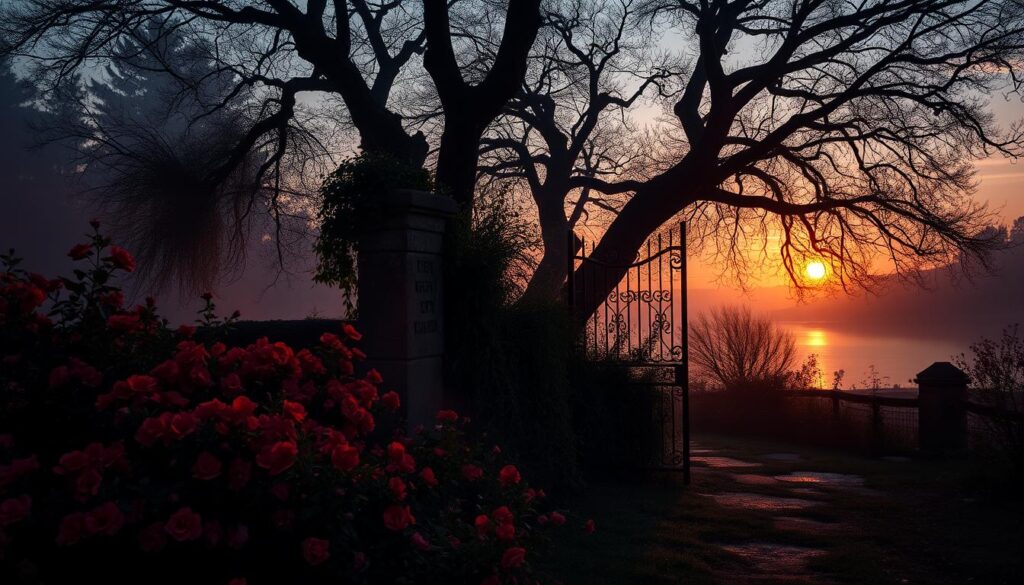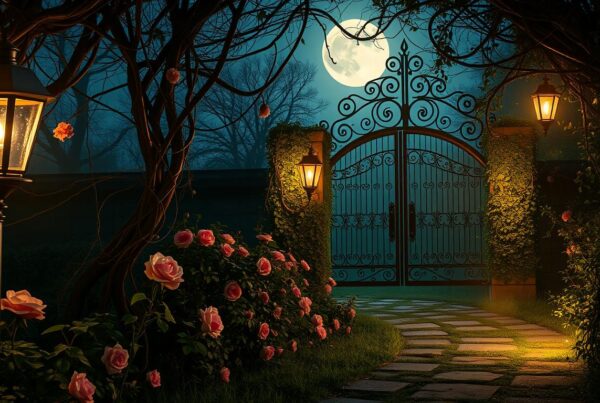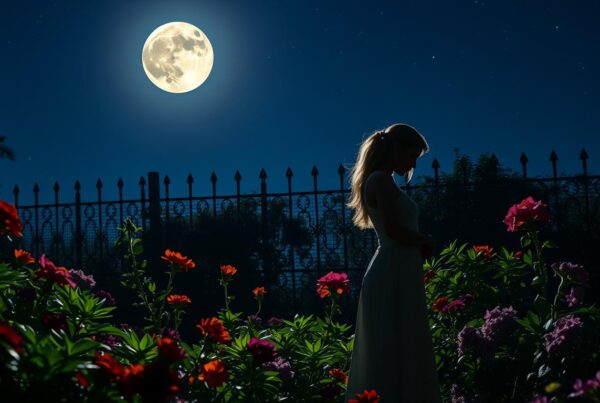Book-to-film adaptations have always caught our attention. They especially shine when it’s about forbidden love. These movies bring to life stories of passion and the push against society’s rules.
They show us the deep desire for connection. From old classics to new tales, these films give us a new look at love. They keep the heart of the original stories alive.
The Timeless Allure of Forbidden Love Stories
Romance has always drawn readers and viewers. It’s especially true for forbidden love stories. These tales of love against the odds capture our hearts. They explore deep human experiences through literature.
From “Romeo and Juliet” to today’s stories, the conflict is key. It’s about breaking through societal, cultural, or family barriers.
Why do these stories last forever? They’re relatable. We may not face the same challenges, but we all know what it’s like to want happiness. This struggle shows us the true nature of being human.
Forbidden love stories show love at its most intense. The risks are high, and the emotions deep. They tell us that love is worth fighting for, no matter what.
The allure of forbidden love stories shows our deep desire for happiness. Despite society’s rules, we keep seeking love. This appeal keeps inspiring and captivating us, making these stories timeless favorites.
Why Adapt Forbidden Love Narratives for the Screen?
Filmmakers love to turn forbidden love stories into movies. This lets them dive deep into human feelings and connections. It’s a journey that changes both the makers and the viewers.
The magic of visual storytelling in films makes these love stories reach more people. It adds a personal touch to characters and their stories. Scenes that were just thoughts in readers’ minds come to life on screen.
Adapting these stories is both a hit with fans and a creative challenge. It brings the epic romances to life in a way that grabs viewers. These films keep the stories alive for new fans, making them part of today’s culture.
Adapting forbidden love tales is a special task. It’s about capturing the drama, passion, and heartbreak. Filmmakers keep these stories alive, making them new again for us to enjoy.
Classic Forbidden Love Novels Turned Films
Film adaptations of classic literature are special in cinema. They focus on period dramas with forbidden love. These films bring timeless stories to life, showing love’s emotional depth and societal challenges.
Pride and Prejudice
Jane Austen’s “Pride and Prejudice” has many film versions. Each one shows Elizabeth Bennet and Mr. Darcy’s changing feelings. The 2005 version, with Keira Knightley and Matthew Macfadyen, shows the strict class rules and moral issues of Regency England.
The film’s beautiful scenes and moving acting make it loved by today’s viewers. It’s a key part of period dramas.
Wuthering Heights
Emily Brontë’s “Wuthering Heights” is a famous tale of forbidden love. It has been made into many films. The 2011 film by Andrea Arnold is one of the best.
It shows the wild moors and the intense love between Heathcliff and Catherine Earnshaw. The film explores the deep feelings and harsh settings, making the story relatable today.
Anna Karenina
Leo Tolstoy’s “Anna Karenina” is a tragic love story. The 2012 film, starring Keira Knightley, is a lavish and artistic version. It shows the beauty of Imperial Russia and Anna’s complicated affair with Count Vronsky.
This film is known for mixing theater and cinema. It highlights the emotional and moral complexities of period dramas and classic literature.
Modern Takes on Forbidden Love in Cinema
In recent years, the film industry has seen a rise in modern takes on forbidden love. These stories are fresh and resonate with today’s audiences. They offer a new look at timeless themes.
Romeo + Juliet
Baz Luhrmann’s “Romeo + Juliet” is a great example of modernizing classic tales. It keeps the original dialogue but adds a new twist. The film is set in a lively city, making it appealing to today’s viewers.
It’s known for its bold style and energetic acting. This makes it a standout in modern cinema.

Call Me by Your Name
“Call Me by Your Name” by Luca Guadagnino is a moving story of love. It’s set in the beautiful Italian countryside. The film shows the beauty of a summer romance with stunning visuals and deep performances.
It has won many fans and critics. This shows how well modern adaptations can touch our hearts.
Brokeback Mountain
Ang Lee’s “Brokeback Mountain” changed how we see love in movies. It tells the story of two cowboys’ love, showing the power of love despite societal rules. The film is praised for its honest look at love.
It shows the importance of love stories in today’s cinema. They help us understand the struggle for acceptance and love.
Challenges in Adapting Forbidden Love Stories
Turning forbidden love stories into movies is tough. It’s all about finding the right balance. You need to stay true to the story but also make the movie its own thing.
It’s important to get the story’s core themes right. Then, you have to make them come alive on screen. Things like movie length and censorship can change how you tell the story. For example, Baz Luhrmann’s “Romeo + Juliet” updated Shakespeare but kept the heart of the story.
Adaptations that stray too far from the original often get criticized. Joe Wright’s “Pride and Prejudice” kept much of Jane Austen’s story. But it also added new touches to grab today’s viewers. This way, both fans of Austen and newcomers found something to love.
Decisions like Ang Lee’s in “Brokeback Mountain” show the importance of staying true to the story. Lee brought the short story to life in a way that honored its spirit. It shows you can be faithful to the original while also making it your own.
Comparing Book and Film: Detailing the Differences
Turning a forbidden love story from book to movie is a big challenge. It’s about keeping the story’s heart while using the screen’s power. Filmmakers aim to capture the story’s essence and feelings for viewers.
Maintaining the Essence of the Story
Keeping the story’s core is a big challenge. Directors and writers work hard to make sure the themes and feelings connect with viewers. They try to keep the book’s true moments while making the movie lively.
It’s key to keep the story’s heart when moving from book to movie. This means keeping true dialogue, choosing the right settings, and picking actors who really get the characters.
Changes and Omissions
Movies often change things to fit their own needs. Some parts or characters might be left out to keep the story moving. For example, long inner thoughts in books can’t be shown in movies.
“Anna Karenina” is a great example. The movie used a unique way to show the story’s big moments, leaving out some characters. These choices help make the story fit into a movie.
Audiences’ Reactions
People have different views on book vs. movie versions. Some fans of the book might feel let down by changes. But others see the movie as its own story, enjoying its unique way of telling the tale.
Knowing how people react helps creators find the right balance. They aim to stay true to the book but also make the movie its own thing. This back-and-forth between creators and viewers shapes future adaptations.
Actors and Directors Making Forbidden Love Come Alive
Casting is key in making forbidden love stories shine on screen. Actors add depth to their roles, making a film unforgettable. Leonardo DiCaprio and Claire Danes in “Romeo + Juliet” are a perfect example.
Iconic Performances
Heath Ledger and Jake Gyllenhaal in “Brokeback Mountain” showed how actors dive deep into their roles. Their portrayal of forbidden love was groundbreaking and touching. It made the story hit home with viewers everywhere.
Directorial Choices
A director’s vision is crucial in telling a forbidden love story. Ang Lee’s work in “Brokeback Mountain” used stunning landscapes and close moments to show the characters’ deep bond. His style and pacing made the story timeless.
Baz Luhrmann, known for his bold style, brings Shakespeare’s tales to today’s viewers. His vibrant visuals and unique pace make the stories fresh and exciting.
Forbidden Love in Different Cultures
Forbidden love shows up in many ways around the world. Eastern and Western views often tell different stories. This is because of different rules, traditions, and values.
Eastern vs. Western Perspectives
In Western stories, forbidden love is about being true to oneself. “Romeo and Juliet” and “Jane Eyre” show characters fighting against family and society to be together. These tales focus on personal freedom and being true to one’s heart.
Eastern stories, on the other hand, often mix forbidden love with family and community duties. “In the Mood for Love” by Wong Kar-wai shows the quiet struggles under cultural pressure. These stories value family and community over personal desires.
Cultural Adaptations
Adapting forbidden love stories across cultures is interesting. When Eastern tales meet Western audiences, and vice versa, they change a lot. For example, “Bride and Prejudice” brings Indian flair to “Pride and Prejudice” while keeping the core story.
But not all adaptations work. Some fail to connect cultures, leading to stories that don’t feel right. Good adaptations need to understand and respect the original deeply. This way, they keep the emotional truth of the story alive.
Adapting love stories for different cultures starts global talks about love and rules. They show common truths and celebrate unique cultural views on love. This makes us appreciate more the many ways love is expressed around the world.
Romantic Genres Encompassing Forbidden Love
Forbidden love is a theme that crosses many romantic genres. It makes love stories even more compelling. Movies like “Titanic” and “La La Land” show how forbidden love adds depth to romance. They take us into a world where love has no limits, but society gets in the way.
In tragic films, forbidden love often takes center stage. “Romeo + Juliet,” by Baz Luhrmann, is a classic example. It shows how love can lead to a dramatic end. These films highlight the power of love and the heartbreak that comes with it.
Romantic comedies like “Notting Hill” offer a different take on forbidden love. They use humor to show the ups and downs of love that defies the norm. These movies show the lighter side of love without losing its emotional depth.
Fantasy and dystopian movies also feature forbidden love. “The Hunger Games” and “Twilight” use these settings to show love vs. duty. These genres make forbidden love even more compelling by adding a touch of fantasy.
By exploring forbidden love in different genres, filmmakers show many sides of love. This makes forbidden love a timeless favorite in movies. It continues to captivate us with its complex and emotional stories.
The Impact of Forbidden Love Narratives on Society
Forbidden love stories have a big impact on society. They challenge social norms and start important conversations. These stories show love beyond class, race, and cultural taboos.
Forbidden love stories help talk about LGBTQ+ rights. Movies like “Call Me by Your Name” and “Brokeback Mountain” show the struggles of LGBTQ+ people. They make us understand and feel for others, leading to more acceptance.
Studies show that stories can change how we see the world. Watching diverse stories can make us more empathetic and less prejudiced. By telling forbidden love stories, creators help us talk about being inclusive and respecting all kinds of love.
Upcoming Adaptations to Watch Out For
The film world is buzzing with excitement for new movies based on forbidden love stories. We’re looking forward to these previews, which promise to captivate and offer new views on old tales.
Anticipated Releases
The remake of Emily Brontë’s “Wuthering Heights” is highly anticipated. This classic tale of intense love is getting a new cast and director. It’s expected to explore the characters’ deep emotions in a fresh way.
The adaptation of André Aciman’s “Find Me” is also on everyone’s radar. It’s the sequel to “Call Me by Your Name,” which was a huge hit. Fans are hoping this new film will keep the magic alive with its exploration of forbidden love.
Rumored Projects
There’s buzz about a project based on Haruki Murakami’s “Kafka on the Shore”. It’s still in the early stages, but it’s expected to blend magical realism with deep, forbidden connections. It could attract both Murakami fans and newcomers.
There’s also talk of a modern take on “Romeo and Juliet”. This version aims to tackle today’s challenges and bring a fresh spin to the classic tale of forbidden love. If it happens, it could start a trend of new, exciting takes on old stories.
The Role of Music and Scenery in Forbidden Love Films
Forbidden love stories come alive with music and scenery. These elements create a deep connection with viewers. Music and location add layers of emotion to the story, making it rich and complex.
Setting the Mood
Choosing the right location is key in setting the mood. Places like the Italian countryside in “Call Me by Your Name” or the mountains in “Brokeback Mountain” tell the story. They enhance the emotional journey, making the story more relatable.

Iconic Soundtracks
Film scores are just as crucial as the scenery. The music in “Romeo + Juliet” or “Pride and Prejudice” stirs deep emotions. These soundtracks are not just background music. They guide us through the ups and downs of forbidden love.
How Streaming Services Are Changing Forbidden Love Adaptations
Streaming services like Netflix, Hulu, and Amazon Prime Video have changed how we watch forbidden love stories. Now, we can watch a wide range of films from home. These platforms offer both classic and new adaptations that might not have been seen in theaters.
Streaming lets creators make series out of forbidden love stories. This means we get to see deeper into characters and stories. Unlike movies, series can explore complex emotions and relationships in more detail.
But, there are challenges too. With so much content, new shows must grab our attention. Binge-watching changes how we watch, focusing on instant pleasure over waiting for episodes. Still, streaming services are making forbidden love stories more accessible and engaging than ever before.



